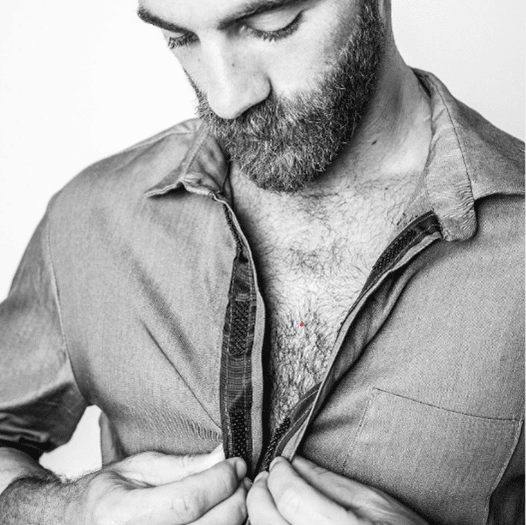Over one billion people, or 15 percent of the world’s population, experience some form of disability, according to the World Bank Group. Disabled people are still very much excluded from the mainstream fashion conversation.
Clothes matter to everyone, and since dressing is something that everyone does, it should therefore be considered a basic right. This means that, regardless of the body size, skin colour, or whether there is a disability or not, dressing is an essential right that should be at the minimum be guaranteed.
Disabilities come in a variety of forms and can demand specific clothing needs, such as an adjusted size and fit or alternative closures. For example, regular-cut trousers will often ride up when the wearer is in a seated position, making them impractical for wheelchair users. Buttons and fine zippers can be fiddly for those with dexterity issues.

There are many types of disabilities, each comes with a different struggle
Disabilities out there are multiple. That means that different people have different disabilities and, in consequence, different necessities. Therefore, they face different difficulties. Whilst doing some market research and asking fellow members of our community about their struggles, we came up with a few summaries of what disabled people go through when getting ready for the day and when they go shopping:
- Most labels and tags don’t come in braille, which means that people with visual impairments cannot read them.
 Dressing rooms in stores are not adapted to the various disabilities out there. Buying new clothes can become a nightmare and an embarrassing time when doing something common for most people, such as trying on clothes before taking them home.
Dressing rooms in stores are not adapted to the various disabilities out there. Buying new clothes can become a nightmare and an embarrassing time when doing something common for most people, such as trying on clothes before taking them home.- Shopping, in general, can be hard for people with disabilities, either going in person to the stores or online. Most websites are not adapted and when visually disabled people try to use them with their computer resources, the website is also not compatible with screen readers, inclusive apps, etc. Another problem is that many stores do not describe the products very well, which makes this search even more difficult;
- Clothing size. Different disabilities make different people, which means different body types and sizes. People with dwarfism, for example, usually find clothes only on the children’s part. But what about style? What about personal identity? Not necessarily only because a person is small, means that they should wear children’s clothing. Discussions about plus size are emerging and becoming significant and that’s legit. But we can’t forget about small sizes, too;
- Difficulties with accessories in general. The majority of earrings, necklaces, and bracelets are not easy to put on. There are several alternatives such as the use of a magnet in the clasps, bras that facilitate placement, but, unfortunately, they are not always easy to find and, in most cases, they are more expensive.
Education is Key!
Only once brands, retailers and industry stakeholders become aware about different disabilities, and understand the various challenges that disabled individuals face, will it be possible to make any kind of meaningful or impactful change.
 Connecting with disabled individuals, as well as organizations that represent the disabled community, will help nurture understanding and awareness. Similarly, creating a safe education space where people can say the wrong things and ask questions can facilitate more open and honest conversation.
Connecting with disabled individuals, as well as organizations that represent the disabled community, will help nurture understanding and awareness. Similarly, creating a safe education space where people can say the wrong things and ask questions can facilitate more open and honest conversation.
The fashion industry reflects what happens in society. Therefore, those who are socially and historically marginalized, end up not being represented and included by brands.
So, share with us your thoughts on this:
We would like to hear from you, as a community, what you think causes disabled people not to stand up for themselves and make themselves heard. Their so much diversity in today’s fashion world and companies need to realize what’s right for their target audience – the fact that there are disabled people in this world, not just abled.
We need more distinction when it comes to designing clothes, stores and e-commerce sites so everyone can function equally outdoors and in. Share with us, your experiences and what works best for you in the comments below.

Leave A Comment